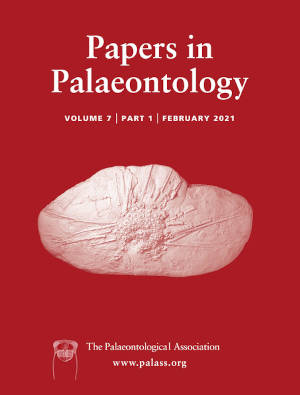Reg. Charity No. 1168330

Secondary growth is a tracheophyte structural feature whose earliest known occurrence dates to the late Pragian – early Emsian. Armoricaphyton, Franhueberia and an unnamed plant from eastern Canada represent the only instances of secondary growth documented to date for the Early Devonian. Here, we describe a new Early Devonian euphyllophyte exhibiting secondary growth, from the Emsian (c. 400–395 Ma) Battery Point Formation (Québec, Canada): Gmujij tetraxylopteroides gen. et sp. nov., which is characterized by a mesarch actinostele with Psilophyton-type (P-type) tracheid wall thickening, and which exhibits a new type of anatomical organization in Early Devonian wood-producing euphyllophytes. Gmujij differs from coeval euphyllophytes, but lack of data on branching patterns, reproductive structures and other traditional diagnostic features precludes classification in previously recognized euphyllophyte groups. We experiment with a numerical approach to tracheid size distributions, to compare Gmujij with younger euphyllophytes exhibiting secondary growth. Comparisons indicate similarity between Gmujij and aneurophytalean progymnosperms, such as Tetraxylopteris. However, its plesiomorphic P-type tracheids set Gmujij apart from younger actinostelic euphyllophytes, questioning the importance of tracheid thickening patterns as diagnostic characters separating major lineages. Answers to this question hinge on whether transitions between wall thickening patterns require simple or complex changes in developmental regulation, a matter that requires improved understanding of regulatory programs that determine tracheid thickening patterns. Irrespective of these, Gmujij adds a new component to the diversity of anatomically preserved plants known in the Early Devonian, an incompletely explored interval of tracheophyte anatomical diversification, contributing information that will facilitate understanding of the evolutionary origins of secondary growth.